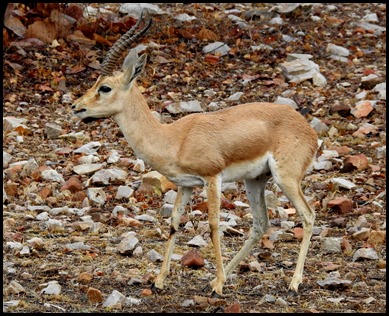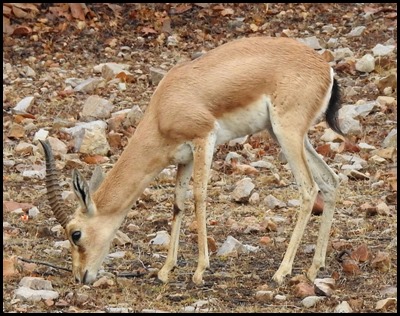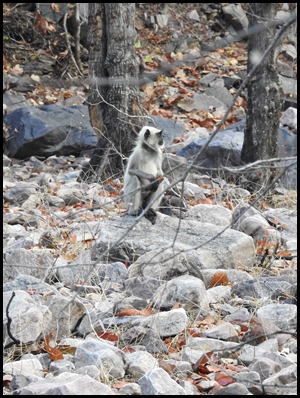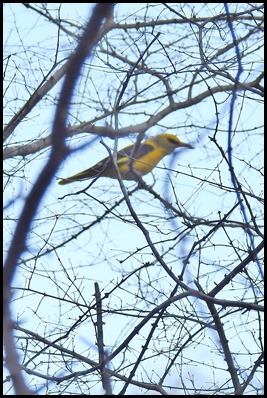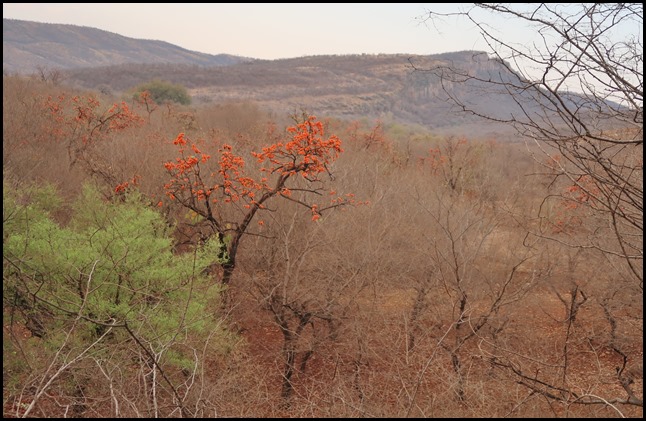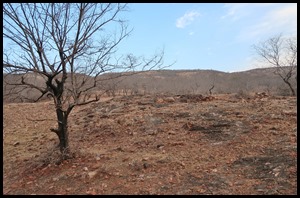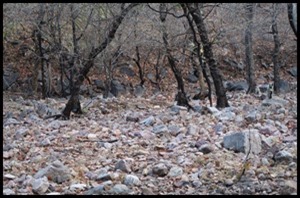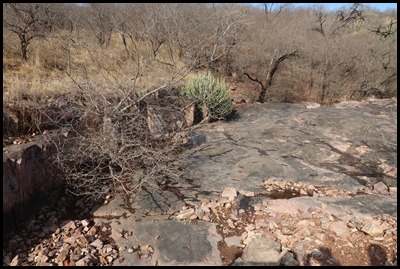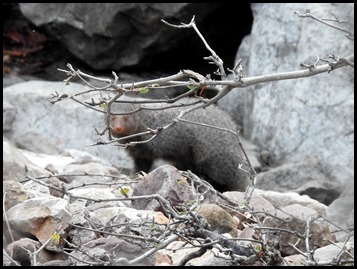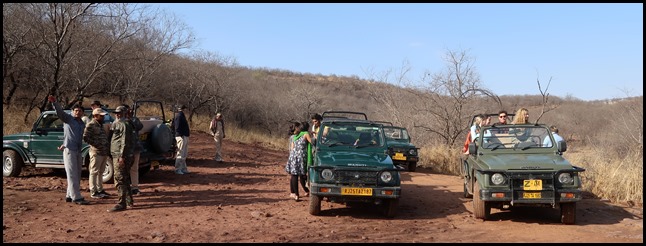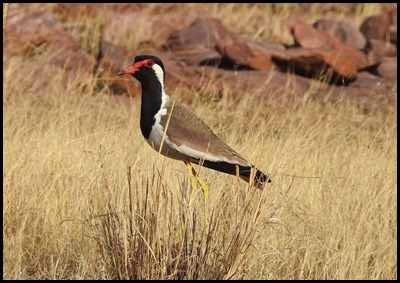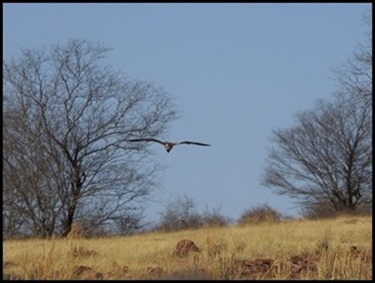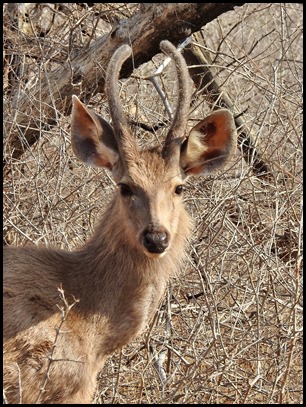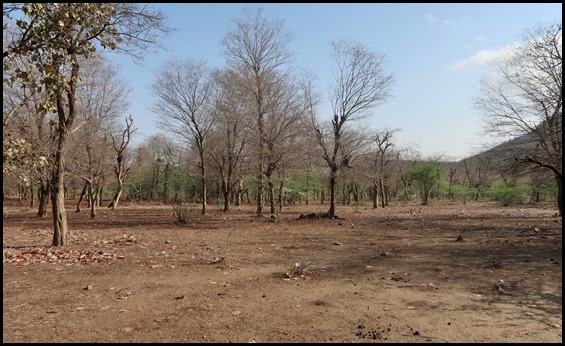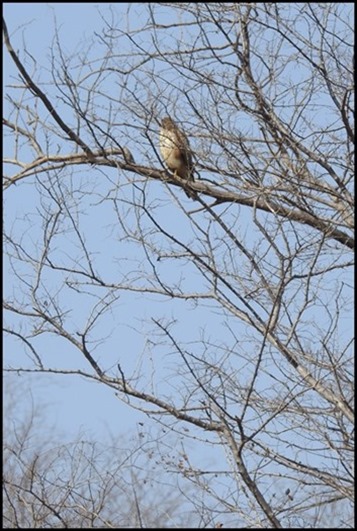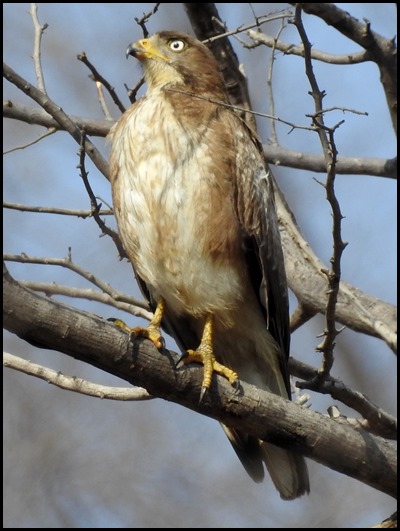Ranthambore 1

|
Safari Number One, Zone Seven in the
Ranthambore National Park
 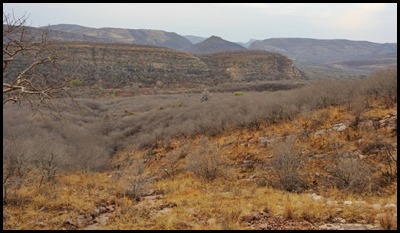 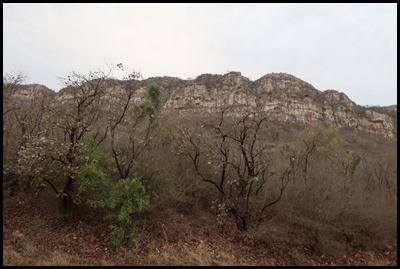 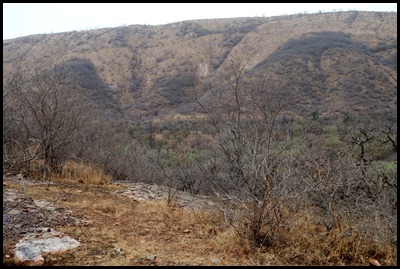 We
leapt up this morning and after a quick cup of tea waited in the reception of
our digs at six, “Oh, safari come at six thirty”, OK then, may as well wait
then. At six forty a jeep arrived with a German couple in the seats behind the
driver and guide and an Italian couple in the back. Bear settled next to the
Germans middle right, me back left. I had seen another jeep go off with a lady
carrying a blanket, I did the same and was pleased to use it as a seat as we
bumped along. It was very breezy as we galloped along the main road, soon
turning and passing through a grim, rubbish strewn town. No sooner than we had
reached the gate for Zone Seven than the scenery changed. Wow by ten to seven we
were looking across scrubland and up in the hills
that leopards hide away from their much bigger un-friends – the
tigers.
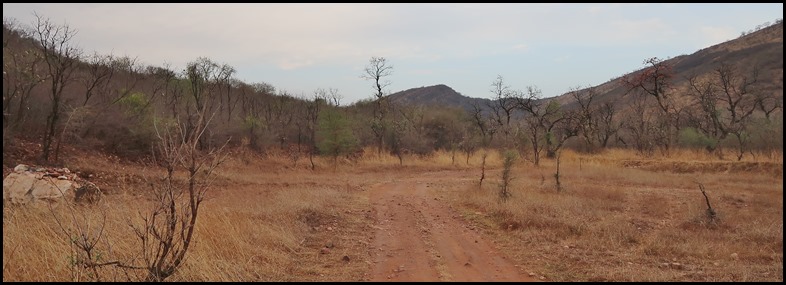 We
followed a track along the valley
floor.
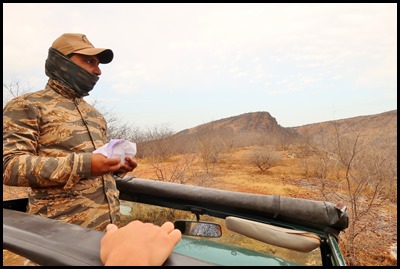  Our guide wrapped up against the cold. Well, even if we see
nothing this morning the scenery is
stunning.
 Ranthambore (or
Ranthambhore) National Park covers an area of
nearly 400 square kilometres.The park was established as the Sawai Madhopur
Game Sanctuary in 1955 by the Indian Government and was declared one of the
Project Tiger reserves in 1973. Ranthambore became a national park in 1980. In
1984, the adjacent forests were declared the Sawai Man Singh Sanctuary
and Keladevi Sanctuary, and in 1991 the tiger reserve was enlarged to
include the Sawai Man Singh and Keladevi
sanctuaries.
Ranthambore is known for Bengal tigers, Indian leopard, wild boar, nilgai (blue bull antelope), chinkara (Indian gazelle), sambar (large deer), chital (spotted deer), striped hyena, sloth bear, southern plains grey langur, rhesus macaque and mugger crocodile.
Twenty-five per cent of the park is used for jeep safari, each morning the park authorities randomly assign booked visitors to a jeep and the jeep a random zone number, one to ten. Our four safari zones were seven, six, two and the very unpopular, very bumpy ten.
The very pretty chinkara, a small gazelle standing about 65 cms and weighing about 23 kgs. These are solitary animals that can go without water for about ten days and have to be quick to avoid leopards and tigers.
Soon we saw a southern plains grey langur on watch, a red vented bulbul and a golden oriole as we bumped along.
The lovely orange bloomed Flame of the Forest (Butea monosperma), also known as the bastard teak, battle of Plessey tree, Bengal kino, palas tree or parrot tree. I like Flame of the Forest as it is the perfect description of the flash of colour in the sandy colours and odd green tree.
We crossed fairly bare ridges, down through dry river beds and looked up at the sandstone hills.
We stopped at a flat stone ridge that had a pool on the other side. There we saw a mongoose and then this little chap hopped in to pose.
Up a hill where all the jeeps in this zone seemed to congregate for the guides to compare notes.
A lapwing made a bit of a song and dance before she took off.
The IUCN Red List puts the sambar deer as Vulnerable due to severe hunting and being the favourite meal of tigers and crocodiles. This young stag will grow up to weigh around 546 kilograms. He will learn to wallow and dig his antlers in urine-soaked soil to then rub them against tree trunks. He will also be able to spray urine on his face with his very flexible Johnson............Mmmm.
A face some may say “only a mother could love” but we love them. Indian buffalo.
Heading back.
Our last creature was this gorgeous white eyed buzzard, then it was back to our digs for a good breakfast at nine thirty. Rest until two and out for safari number two.
ALL IN ALL A GOOD START BEAUTIFUL SCENERY |

